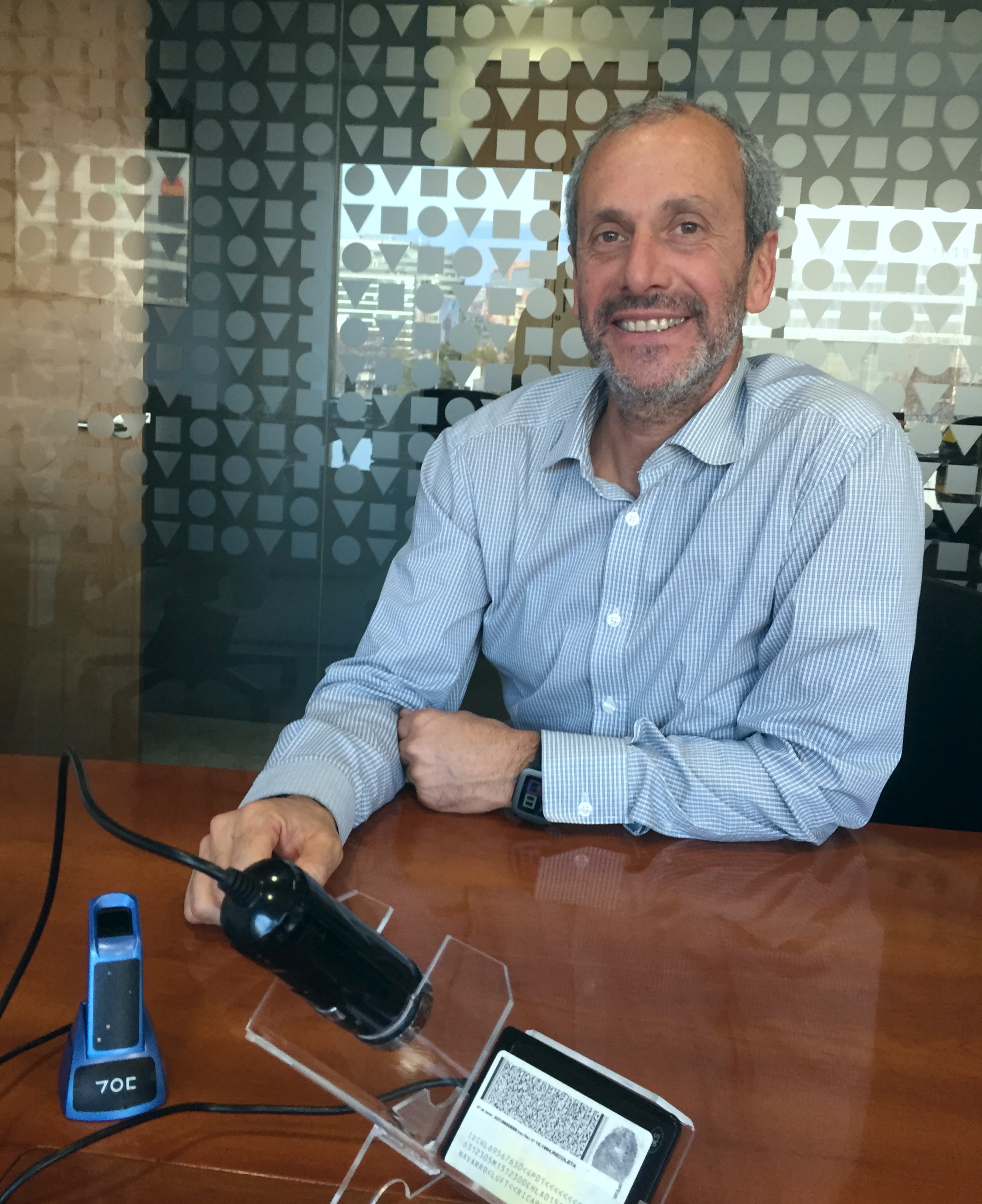In Santiago, Chile, TOC is doing its part to increase security and privacy for consumers through its biometric security systems and electronic signatures. When wandering around Santiago, it isn’t unusual to find TOC hardware asking to capture your index of thumb finger and scan your identification card in exchange for signing a document and/or ensuring your identity. “Today, it’s easy to steal your information and assume a fake identity, but at the end of the day, these people could never steal who you truly are – and that’s recorded in your fingerprint,” states Ricardo Navarro – CEO, founder and inventor of TOC.
Identification cards are used in roughly 50% of the world (not in the USA). They carry a chip containing information on your identity including an image of your fingerprint, your national number, birthdate, address, etc. TOC reads identification cards and double checks information provided against fingerprints for security purposes. To ensure maximum security, TOC captures between 40 and 120 characteristic points that are unique to your finger. “We have never had a fraud or false positive identification, and our false rejection rate is the lowest on the market, lower than 0.8%” says Ricardo, “while our competition has a false rejection rate of 18-20%.” Watch the video below to learn more about TOC's technology (If video does not appear in email, click here.)
Their revenue model consists of three key points: the rental of their hardware with unlimited ID verifications, the number of electronic signatures, and their new development which works on smartphones and tablets with biometric sensors. Today, TOC is doing business in Chile and Peru. In 2014, they won the Innova BBVA contest, DigitalBank Latam contest in Santiago and recently the Digitalbank Latam contest in Lima.
TOC believes they have just started to unravel the future of technology. “We believe the progress we have made so far is just 10% of the potential we have as a team. I am always thinking of how to enhance people's lives through technology and continuously looking to improve technology.”



